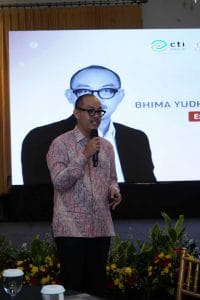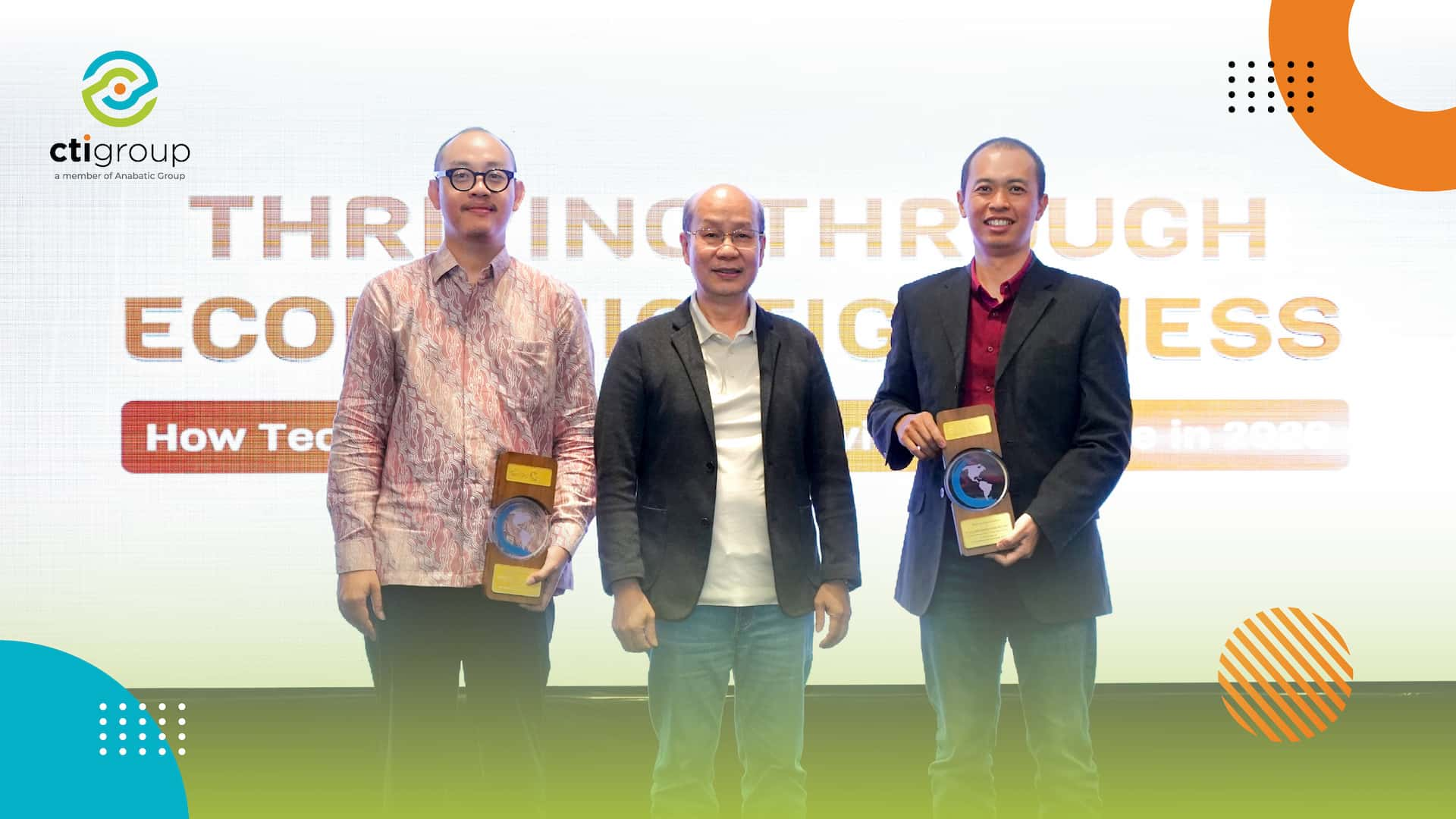Insights from the CTI Group Golden Circle Club 2025
Economic uncertainty is no longer just an external variable; it has become an operational reality for every technology player. The surging US dollar, escalating geopolitical tensions, and tightening global funding have forced many technology companies in Indonesia to rethink their growth plans.
However, an interesting pattern emerged from discussions among industry leaders: uncertainty does not weaken the tech sector; it tests its maturity and strategic resilience. This perspective surfaced during the Golden Circle Club (GCC) 2025, CTI Group’s exclusive forum, which this year carried the theme: “Thriving Through Economic Tightness: How Technology Solution Providers Navigate in 2026.”
In the Executive Roundtable session, executives didn’t simply discuss economic figures; they dissected the evolving map of Indonesia’s IT growth.
One critical insight stood out: the tech businesses that survive in 2026 are not the biggest, but the most adaptive.
Moderated by Toto A. Atmojo, President Director of PT Defender Nusa Semesta (Defenxor), one of CTI Group’s subsidiaries, with Bhima Yudhistira, Founder and Executive Director of the Center of Economic and Law Studies (CELIOS), as the keynote speaker, the session explored not just economic data and trends but also new directions for IT industry players to grow amid global pressures.
The Technology Industry Faces Global Economic Pressures

According to Bhima, the world has been experiencing its highest level of economic uncertainty since 1990. The primary drivers? The strengthening US dollar, unresolved tariff negotiations, and geopolitical escalation, all prompt investors to play it safe by parking funds in assets such as gold.
In recent months, the Indonesian rupiah has hovered around IDR 16,500 per USD, and it is unlikely to see a significant drop, putting immense pressure on import-dependent sectors like IT. Import costs for hardware and software continue to rise, driven by a Producer Price Index that remains tied to USD movements. This is reflected on the vendor and partner sides as well, where organizations are becoming more cautious in building solution portfolios.
During the roundtable, Toto Alfin Atmojo also noted that the third quarter of this year has been particularly challenging for many tech companies. Several publicly listed firms are showing margin pressures and longer sales cycles compared to previous years.
Major Opportunities Emerging from Infrastructure “Decoupling”
Amid all this uncertainty, new opportunities are emerging. Bhima highlighted a shift in talent and investment toward traditional sectors due to declining funding in digital startups. Industries such as manufacturing, FMCG, and healthcare are now strengthening their technology backbones. Digital transformation is shifting from digital-native companies to traditional industries seeking to become digitally enabled.
Instead of pursuing large-scale, ambitious projects, many organizations are now turning to initiatives that deliver value more quickly. Solutions like hybrid cloud, data analytics, and monitoring systems are gaining traction for their ability to reduce costs without compromising business performance.
Bhima also emphasized the digital modernization happening in traditional sectors due to global environmental regulations. This aligns with Indonesia’s 2026 economic direction, which emphasizes energy efficiency, carbon emission reduction, and national digital infrastructure strengthening.
“We’re seeing new opportunities in sectors like palm oil, mining, and forestry, which are now standardizing operations to reduce carbon emissions,” he explained. “Starting in 2026, export regulations will demand stricter carbon footprint reporting. This will push companies to improve their IT infrastructure for emission tracing and monitoring, both to meet global standards and increase operational efficiency.”
Additionally, Bhima pointed out the increasing decoupling between manufacturing growth and IT infrastructure development. Many new industrial zones are being built with imported machinery yet lack the corresponding IT backbone. This gap represents a major opportunity for technology solution providers.
“It means machines are arriving without digital systems to support them. This is a big gap that local tech solution providers can fill,” Bhima added.
Also Read: 8 Strategies to Build Scalable IT Infrastructure to Support Business Growth
Two Core Strategies for Technology Players Heading into 2026
To navigate the coming year, IT businesses should focus on two key strategies:
1. Follow the Money
Based on CELIOS data, IT companies can concentrate on sectors aligned with government priorities and strong funding flows, including energy efficiency initiatives, new industrial zones, SaaS penetration in the financial sector, and IT procurement for defense systems.
2. Smart Downsizing Strategy
With reduced purchasing power, organizations are becoming more selective. This is a momentum for local IT solution providers to offer more efficient, fit-for-purpose solutions including customized offerings tailored to each industry’s needs and business scale.
These two approaches mark a shift from “growth at all costs” to “smart, efficient growth”. A more sustainable long-term strategy.
CTI Group’s Commitment: Strengthening Collaboration, Creating Value

For CTI Group, the Golden Circle Club is more than an annual forum. It is a collaborative space where executives from various partners, from Independent Software Vendors (ISVs) to system integrators exchange insights and build a unified direction for Indonesia’s IT industry.
Participants agreed that the coming years will demand efficiency, adaptability, and operational resilience as core foundations. Meanwhile, AI-driven solutions, cloud technologies, and high-quality local products are expected to be key growth drivers.
Rachmat Gunawan, CEO of CTI Group, reaffirmed the company’s commitment to supporting partners in accelerating digital transformation aligned with CTI Group’s vision. Through platforms like the Golden Circle Club, this strong collaboration will continue to create new value and opportunities for Indonesia’s IT ecosystem.
Author: Eribka David – PR & Media Communication, CTI Group

